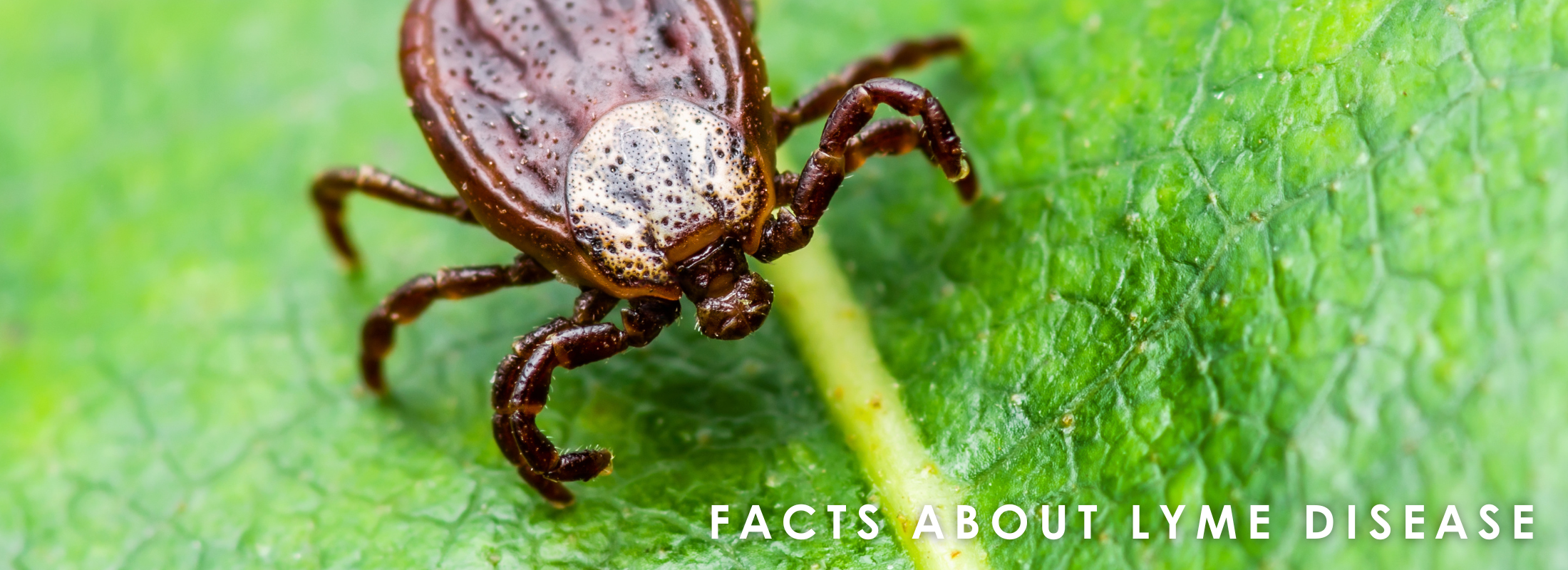
Table of Contents
Recently, we shared some important information and tips about how to avoid ticks outdoors. In that post, we also included steps to tick-proof your backyard. This time, we bring you some pertinent information and a few interesting facts about Lyme disease.
The typical season for ticks is April to September. Of course, not every area of the country has the same types of ticks. So, be sure to check what ticks to be on the lookout for in your specific area.
What Is Lyme Disease?
Humans contract Lyme disease from black-legged tick bites that carry the infectious bacteria. Most often, Borrelia burgdorferi and Borrelia mayonii cause it. The most common symptoms include fever, headache, fatigue, and a characteristic rash that looks like a bull’s-eye. However, not all individuals will experience these symptoms.
If left untreated, Lyme disease can cause serious health problems, including joint pain, neurological problems, and heart problems. You should seek medical attention when bitten by a tick.
Where Does Lyme Disease Come From?
In 1975, Old Lyme, Connecticut, became the first location to identify what we now know as Lyme disease. A group of children and adults in the area developed unusual symptoms, including a red, circular rash and flu-like symptoms. Researchers at Yale University found that tick bites transmitted the bacteria that caused the outbreak.
In honor of Willy Burgdorfer, a Swiss-American scientist who identified the tick species that carried the bacterium, researchers named the bacterium Borrelia burgdorferi. The black-legged tick (or deer tick, lxodes scapularis) primarily spreads Borrelia burgdorferi in the northeastern, mid-Atlantic, and north-central United States. The western black-legged tick (l. pacificus) spreads it in the Pacific Coast states.
In 2013, scientists at the Mayo Clinic noticed an unusual result while testing blood from patients thought to have Lyme disease. Cooperation between Mayo Clinic, state public health agencies, and the CDC confirmed that a new type of bacteria that infects people can live in black-legged ticks. Researchers have detected Borrelia mayonii only in black-legged ticks in the north-central United States. It is rare for ticks to carry this strain of bacterium.
Who Can Be Infected?
Lyme disease can affect people of any age. In general, people who spend time outdoors in activities such as camping, hiking, golfing, or working or playing in grassy and wooded environments are at increased risk of exposure.
The Centers for Disease Control and Prevention (CDC) reported over 42,700 cases of Lyme disease in the United States in 2019. However, the number of infections may be much higher, as many cases go unreported or undiagnosed. Insurance records indicate that healthcare professionals diagnose and treat approximately 476,000 Americans for the disease each year, according to a recently released estimate.
According to a recent study published in BMJ Global Health, Lyme disease appears to be getting worse, and the study estimates that 14.5% of the world’s population has been infected with the disease at some point. Lyme prevalence has doubled from 2010 to 2021, compared to 2001 to 2010.
As for why the rate of Lyme has doubled in the last decade, climate change may play an important role. Higher temperatures and longer springs and summers increase the range of ticks and the amount of time people spend outside. “Tick populations,” the researchers write, “have expanded globally and geographically in recent years, thereby greatly increasing the risk of human exposure.”
What Can I Do To Avoid Lyme Disease?
Preventing Lyme disease is most effective when individuals wear long pants and sleeves, use insect repellent, and avoid areas with high grass and leaf litter to avoid tick bites.
Indeed, you should remove a tick immediately if one bites you. To do this, grasp the tick with tweezers and pull it straight out. Do not twist the tick, which can cause the mouthparts to break off and remain in the skin.
If you develop any symptoms, such as a fever, headache, or rash, you must seek medical attention right away. Early diagnosis and treatment of the disease are likely to result in a better outcome.
What To Do If Diagnosed?
Diagnosing Lyme disease can be challenging, as the symptoms can be similar to those of other conditions. Get medical attention immediately if you suspect that a tick has bitten you. Your healthcare provider will likely perform a physical exam, take a medical history, and order blood tests to check for signs of infection.
Treatment usually involves a course of antibiotics. In most cases, patients recover fully with appropriate treatment. However, some individuals may experience ongoing symptoms even after treatment, a condition known as post-treatment Lyme disease syndrome (PTLDS).
The most common medications used to treat Lyme disease are antibiotics. Antibiotics kill the bacteria that cause the infection and are most effective when started early during the onset of the disease. The length of treatment varies depending on the severity of the infection and may range from a few days to several weeks.
Treatment & Cure
Some of the most commonly used antibiotics for treating Lyme disease include:
- Doxycycline: A broad-spectrum antibiotic that is often used to treat early-stage Lyme disease.
- Amoxicillin: A penicillin-like antibiotic that is often used to treat early-stage Lyme disease in children and pregnant women.
- Ceftriaxone: An injectable antibiotic that is often used to treat more severe cases of Lyme disease, particularly those that involve neurological or cardiac symptoms.
In addition to antibiotics, other medications are available to manage symptoms of Lyme disease, such as pain relievers or anti-inflammatory drugs.
If you are diagnosed with Lyme disease, prompt treatment with antibiotics can help to prevent the infection from spreading and can reduce the risk of long-term complications. Most individuals recover fully with appropriate treatment. If you are experiencing symptoms of tick-borne diseases, don’t wait; visit your local urgent care center or a PCP for testing and treatment.
© Excel Urgent Care and Affiliates 2023
Sources:

